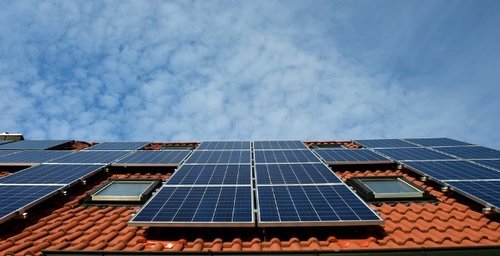How Solar Tariffs Are Expected To Affect The Electrical Industry
Between Phoenix and Yuma lives the biggest solar power plant in the United States, and the Arizona and California regions have recently seen an explosion of renewable energy sources and solar power plants coming online. The future is bright for these states and their commitment to renewable energy through proactive policies and encouragement.
But, the bright future of the solar energy industry is now (to use the terrible and obvious pun) clouded with uncertainty. Why? Trade issues and import tariffs. U.S. based solar panel cell manufacturers have lobbied for and won a tariff on imported solar panels. The imported panels are often cheaper than the U.S. manufactured panels and offer a very steep competition to their business.
The purpose of the tariff is to encourage solar farmers to purchase their cells from U.S. manufacturers, which will hopefully promote job growth and more competition in the manufacturing industry.
What does this mean?
Starting a solar farm in the future is going to be more costly, which is going to turn over into higher costs for the consumer. There is a fear that smaller and incoming solar farms will get edged out, and while this is a growing concern (especially admit the current political climate that can seem like a war on clean energy), it is not time to panic yet.
Because the future of solar power is not all that grim in reality, the tariffs may be frightening, but Phoenix electricians are ultimately optimistic about this form of electricity.
The obvious drawbacks to these tariffs:
The reason the tariffs are in place is that the imported solar cells are so much cheaper without a massive reduction in quality. So when a new solar farm goes up they were more likely to use the more affordable option. That isn’t going to be as accessible now.
It’s going to scare off new solar farmers or limit their ability to grow.
And it’s going to increase the overhead costs, and that cost is going to be translated back over to the consumer.
When we think of solar, we think of panels on rooftops, which is merely the tip of the iceberg.
The Silver Lining:
These tariffs are not helpful for the Phoenix solar energy industry, but it’s not all bad. There are some silver linings that make this unpleasant move a bit easier of a pill to swallow.
Whatever growth in the solar cell manufacturing industry is going to be good in the long run. While the estimates for how much it’s going to grow varies and is on the smaller end, it’s still going to be suitable for the solar energy and electric industries in the long run.
The tariffs aren’t enough to ultimately edge out the imported solar cell systems. It may have dulled the edge that the imported companies had, but it is still very sharp competition against the U.S. based manufacturers.
Many of the big companies such as Google and Apple have already cashed in and won't be affected by the tariffs. According to Fortune magazine, “The prices for utility-scale solar farms has become so cheap that even some non-utility companies are joining in, including Apple (AAPL, -0.36%), which is buying tons of solar to power its operations, stores, and data centers.”
No matter what, solar energy is still the future of electricity in this country. Phoenix is a prime candidate for the growth and use of this alternative energy systems, and electric companies and electricians are making great strides forward in its implementation.
Zimmerman Electric is here to serve your residential and commercial electrical needs throughout the Phoenix Valley metro area. Call us today if you need electrical work performed 602-497-3365


